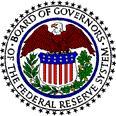This article re-examines the argument presented by the economic historian Karl Polanyi in his major work, The Great Transformation, regarding the integration of money into a self-regulating market system in the United States. Polanyi argued that money was only included in the self-regulating market system in 1900 with the establishment of a formal gold standard. The establishment of the Federal Reserve System appeared to be the initial response to this development. It is the contention of this article that money was included in the self-regulating market system as early as 1879 with the establishment of a de factor gold standard. In addition, while the Federal Reserve System was a response to the self-regulating market system it was not the initial central banking response, due to the intervention of the U.S. Treasury in the free operation of the gold standard, nor was it a complete response due to the nature of the theory underlying the Federal Reserve Act.
(Chennat, 1988)
The purpose of this article is to re-examine the argument presented by the economic historian Karl Polanyi in his major work, The Great Transformation, regarding the integration of money into a self-regulating market system in the United States. It should be noted at the outset that Polanyi focused only briefly on the experience of the United States in this work. The Great Transformation is primarily concerned with the "double movement" observed in 19th century England, i.e., with the attempt to establish a self-regulating market system during the 19th century and the steps that English society took to protect itself from the unintended effects of this process.
Karl Polanyi, in The Great Transformation: The Political and Economic Origins of Our Time (Boston: Beacon Press, 1944) analyzes the history of the rise and fall of nineteenth century market society.


